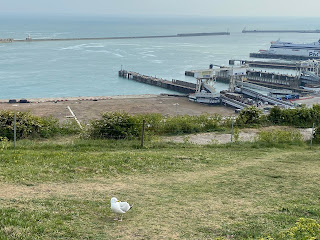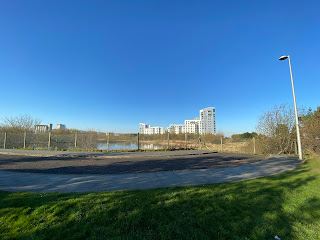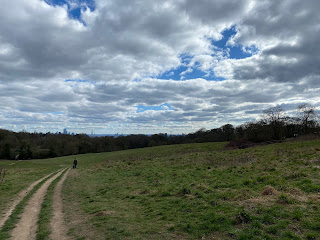Stephen Moss is one of my favourite birding writers, and his latest doesn’t disappoint.
Published in 2023, Ten Birds That Changed the World is an ornithological take on that sub-genre of non-fiction that looks to explore history through certain items or events; other examples of this sort of book that I have enjoyed include The Anatomy of England (a history of the England football team, told through the prism of ten matches), A History of the World in 6 Glasses (or, six drinks that changed the world) and A History of the World in 100 Objects (a collaboration between the British Museum and Radio Four). Since I clearly like this sort of book, one about birds was always going to be right up my alley.
Stephen Moss is a favourite nature writer of mine; I’ve enjoyed books of his like This Birding Life and The Accidental Countryside — and the fact that he has a column in The Guardian is probably the only reason why that newspaper’s website appears on my browser history.
Moss’s choice of birds was done in order for each choice to relate to a fundamental aspect of humanity (and how we humans have interacted with birds) — mythology (the Raven), communication (the Feral Pigeon), food and family (the Wild Turkey), extinction (the Dodo), evolution (Darwin’s finches — between fourteen and eighteen species, depending on how you count them), agriculture (the Guanay Cormorant), conservation (the Snowy Egret), politics (the Bald Eagle), hubris (the Tree Sparrow) and the climate emergency (the Emperor Penguin).
He begins strongly with his chapter on Ravens, looking at their central role in mythology across their range (most of the Northern Hemisphere). Various cultures are explored, which allows Moss to show that he’s done his homework here. This is a well-researched and well-written book. Moss writes well on subjects like extinction and conservation (the story of the Snowy Egret, one of many species of bird killed for its feathers in the nineteenth century and into the twentieth, is also the story of how conservation charities like the RSPB came to be founded), and I think even the most experienced of birders will learn something from this book.
I learned a few new things. I, like the average reader, had thought that the various species of finch on the Galápagos Islands played a key role in the development of Darwin’s theory of evolution — but on reading this, I was disabused of this notion (although he noticed the finches when he went to the Galapagos, he never mentioned them in On the Origin of Species, and the ‘origin myth’ that the finches provided him with a ‘eureka moment’ with regards to evolution only came about after his death, although that hasn’t stopped natural historians up to and including the legendary David Attenborough from repeating the legend as fact).
Although I was aware that the excrement of some birds was once a valuable fertiliser known as guano (thanks largely to this being touched on and referred to as such in Dr. No — the novel, not the film — which Moss mentions in passing), I had no idea that a Victorian businessman called William Gibbs (who made his dibs by selling the turds of foreign birds) became the richest commoner in England by importing vast quantities of the shit of the Guanay Cormorant (one of a very small handful of birds named after something it produces), which revolutionised agricultural practices.
I also had no idea that Mao Tse-Tung (Zedong?) not only tried to eradicate Tree Sparrows in China in the late 1950s but actually managed to whip up enough fervour to get the people to do just that, bringing the bird to near-extinction in the People’s Republic — only to see that action lead directly to a major famine in which millions of people died, as he had not realised that they preyed on insects which, if left unchecked, would decimate the rice crop. The lesson here, other than the fact that Mao was a dangerous nutjob who didn’t think things through but was nevertheless able to maintain an iron grip on the mostly illiterate country he ruled, is that you mess with nature at your peril, which leads onto the final chapter, a hard-hitting polemic about the climate emergency (as he explains, Moss opts not to call it ‘climate change’ as it’s more serious than that).
By using the Emperor Penguin as his subject in the last chapter, Moss is able to show how climate change is affecting the world by focussing on the polar extremes. It so happens that the Emperor Penguin is one of my favourite birds (not that I’ve ever seen one; zoos aside, the only penguins I have ever laid eyes on were the African Penguins at Simonstown Beach, near Cape Town), quite possibly because when I was a child I loved Penguin’s Progress by Jill Tomlinson but also because they breed during the Antarctic winter, which is amazing. Sadly, their prospects are grim thanks to climate change (not just loss of sea ice but also a decline in krill, their main food), with some scientists forecasting that the species could be close to extinction by the end of this century.
A somber note on which to end, but what a fascinating book. Definitely worth reading.
















































